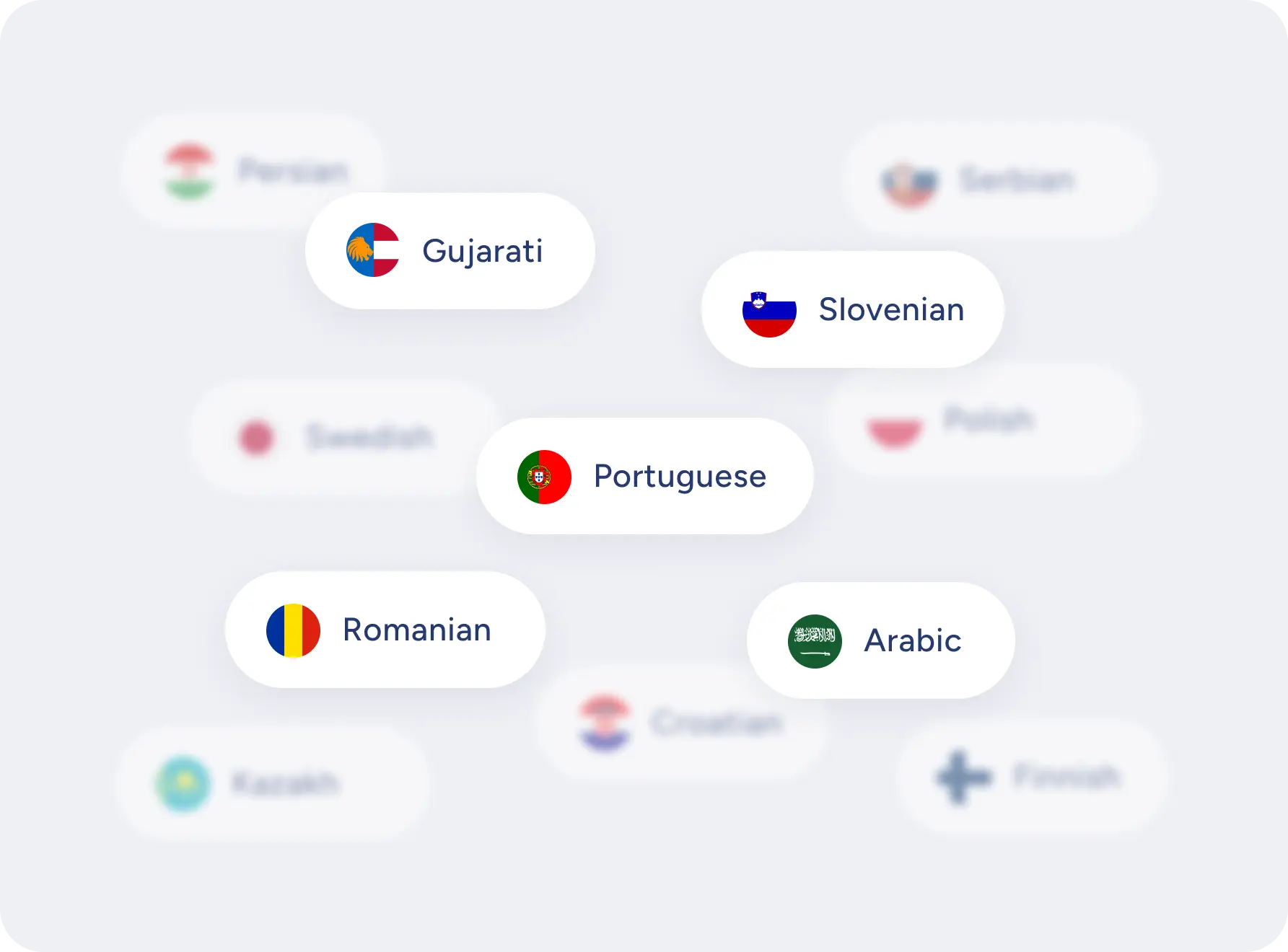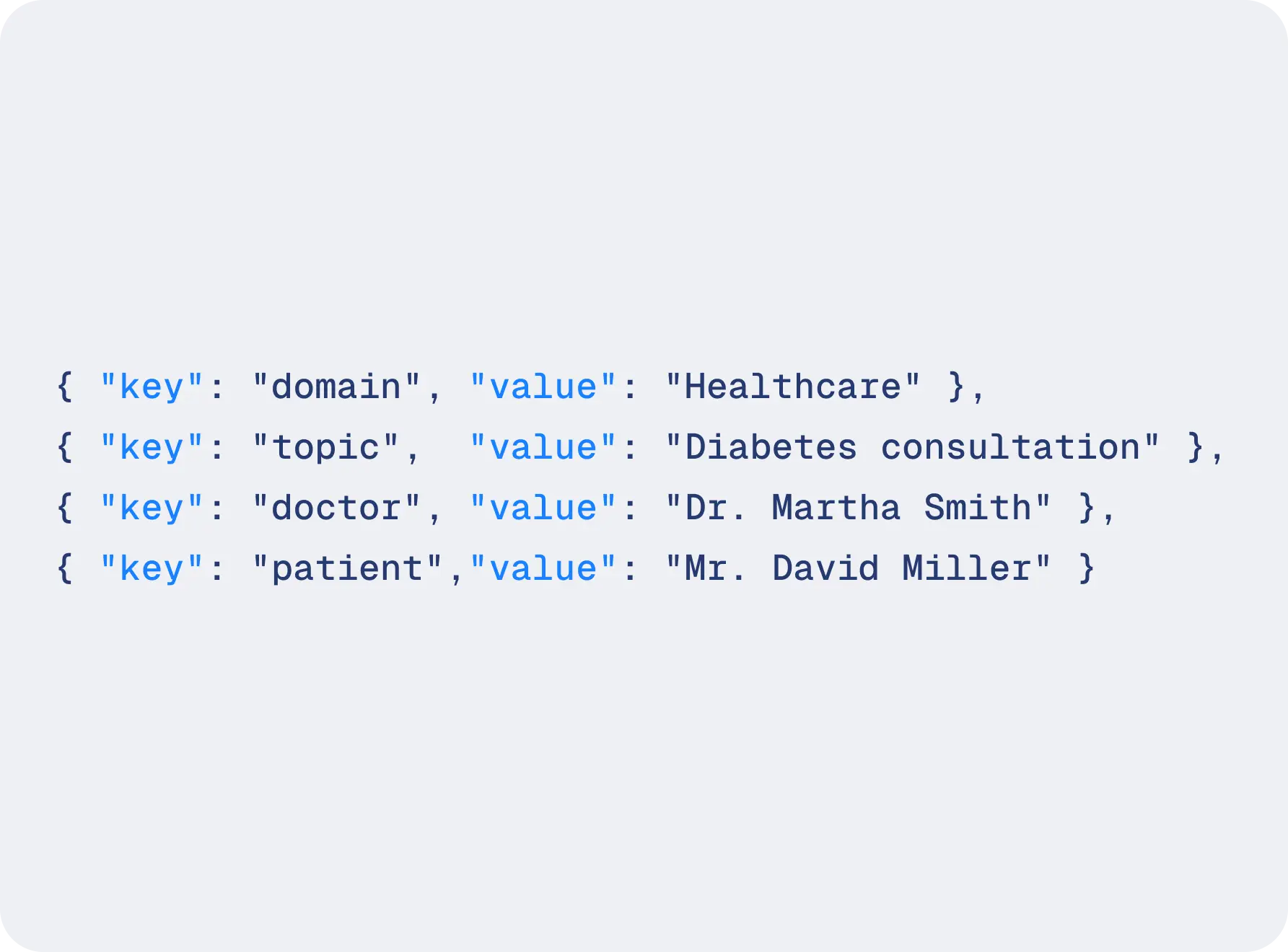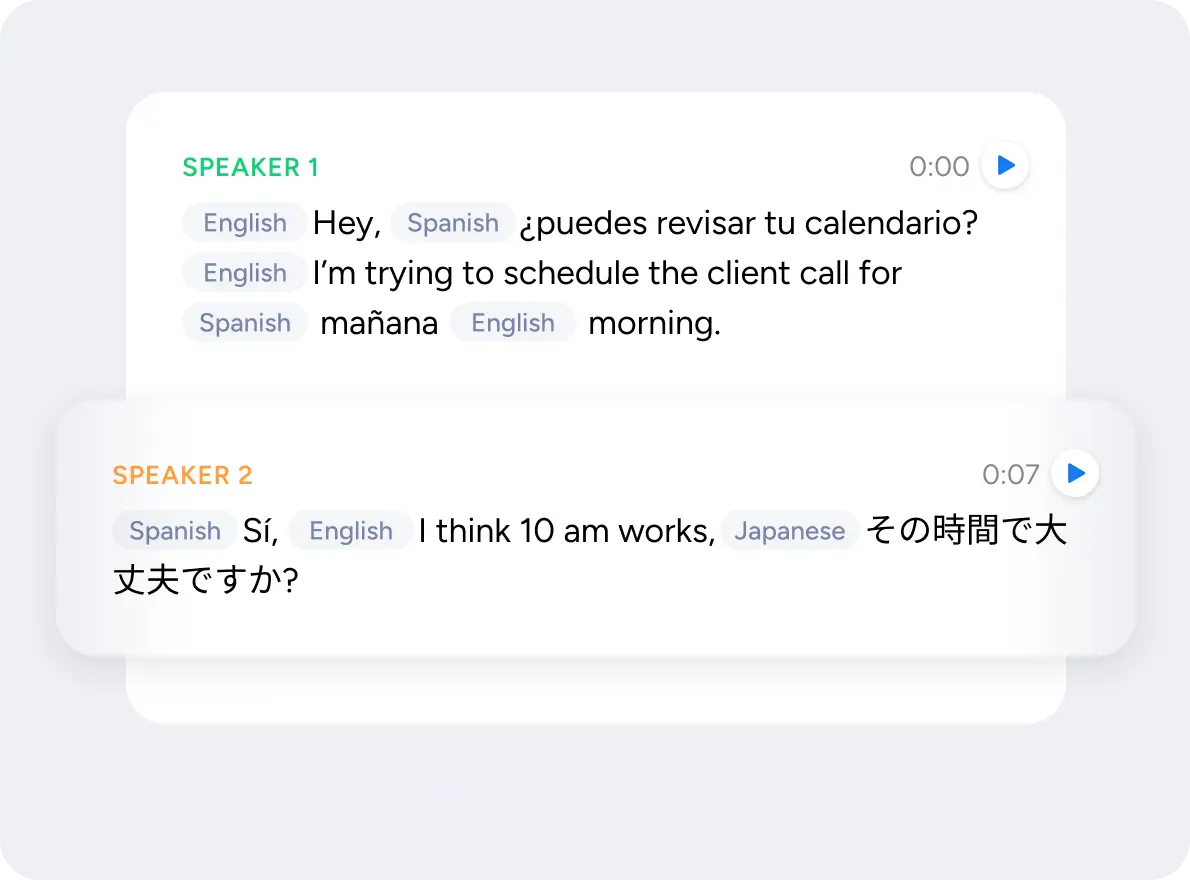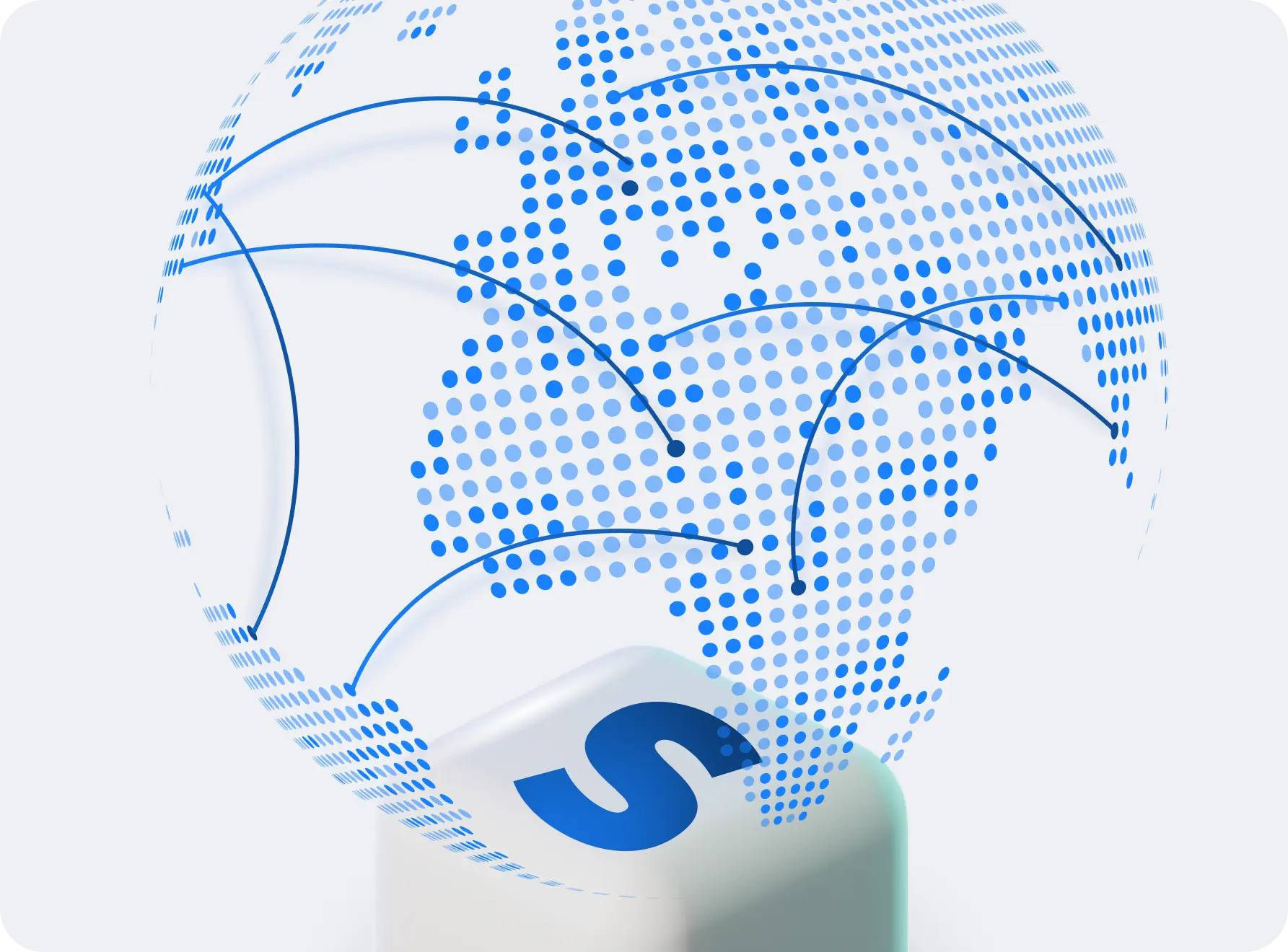Soniox vs OpenAI
for Kazakh speech-to-text
Higher accuracy, richer real-time features, and lower cost for Kazakh transcription.
Developers choose Soniox for real-time, real world Kazakh fluency
Kazakh is spoken by 13 million people worldwide — primarily in Kazakhstan, with speakers around the world. Soniox delivers production-ready transcription and translation for Kazakh, handling regional accents, code-switching, and real-world audio conditions. OpenAI lists Kazakh as supported, but benchmark results show far higher error rates compared to Soniox.
If you need higher real-world accuracy for Kazakh, live streaming features built for apps, and lower cost at scale, Soniox is the better fit. OpenAI's new Realtime API combines transcription and voice output in one API, designed for full voice agents. But it costs more for lower accuracy than Soniox, and lacks diarization, supports only one-way translation into English, and doesn't provide the structured metadata (timestamps, confidence, manual finalize) that developers rely on.
Higher accuracy in Kazakh, and 60+ languages
Kazakh Word Error Rate 9% for Soniox vs 34.4% for OpenAI (lower is better).
Live streaming features, out of the box
Real-time token streaming, diarization, and Kazakh translation in the same stream.
Lower cost, higher value
Pay up to 10x less than OpenAI, which charges more and requires multiple endpoints.
Helping startups and enterprises ship real world voice apps



See the difference for yourself
Don't just take our word for it. Run the same Kazakh audio through Soniox and OpenAI in real-time and compare live results, side by side.
This demo isn't pre-recorded. It makes real API calls to OpenAI and Soniox in real-time, with each service tuned for its best performance. The framework is open source, so you can inspect or run it yourself.
SONIOX VS OPENAI AT A GLANCE
The benchmarks back it up
In a 2025 study across 60 languages and real-world YouTube audio, Soniox reached 9% WER in Kazakh vs 34.4% for OpenAI.
View the full benchmark report| Feature | Sonioxstt-rt-v3 | OpenAIgpt-4o-transcribe |
|---|---|---|
| open_in_newSingle Multilingual Model | check | check |
| open_in_newLanguage Hints | check | close |
| open_in_newLanguage Identification | check | close |
| open_in_newSpeaker Diarization | check | close |
| open_in_newCustomization | check | check |
| open_in_newTimestamps | check | close |
| open_in_newConfidence Scores | check | check |
| open_in_newTranslation One Way | check | check |
| open_in_newTranslation Two Way | check | close |
| open_in_newEndpoint Detection | check | close |
| open_in_newManual Finalization | check | close |
| open_in_newSovereign Cloud | check | warning* |
Pay 2-10x less than OpenAI
With Soniox, all features are included in one price: transcription, streaming, diarization, translation, and 60+ languages. OpenAI charges more and splits features across different endpoints.
Effective hourly cost
(typical speech)
Soniox
~$0.10/hour (async)
~$0.12/hour (streaming)
OpenAI
~$0.38–$1.15/hour
Soniox and OpenAI Whisper are shown as effective $/hour. OpenAI Realtime API is billed per token. Estimates assume typical conversational speech.
Takeaway
Soniox costs 2–10x less than OpenAI. At scale, enterprises save $200K–$1M+ over 3 years, while getting higher accuracy and richer features.
- What about OpenAI's new Realtime API?
OpenAI now charges per token: $32 per million input tokens, $64 per million output tokens
Works out to ~$0.38/hour for transcription or ~$1.15/hour with audio output.
Soniox remains ~$0.10–$0.12/hour, with all features included.
Why teams choose Soniox over OpenAI for Kazakh
Native-speaker accuracy for Kazakh and beyond.
"It just gets the words right — any language, any accent, any context. That’s what accuracy is supposed to look like."
Tony Wang,
Cofounder & Chief Revenue Officer at Agora


Ultra-instant and word-perfect.
"It’s so fast, captions appear before people even finish talking. Zero lag. No buffering. Nothing."
Dag-Inge Aas,
Head of AI at Tana
Built-in domain intelligence.
"Soniox's ability to accurately transcribe complex medical terminology means our physician-customers spend significantly less time editing. This allows them to finalize their notes faster and focus on what matters most: patient care."
Max Malyk,
Vice President at DeliverHealth


Fluent in real-world Kazakh speech.
"Soniox knows who’s speaking and when each thought ends. The real-time transcripts read like true dialogue, not data dumps."
Adam Strom,
Co-Founder & President at Mobius MD
Build once, reach billions.


In-region performance for Kazakh.
Fluent at any speed
Watch Soniox keep up with fast speech in any language
Frequently asked questions about Soniox vs OpenAI
1.How accurate is Soniox vs OpenAI for Kazakh?arrow_downward
2.Can Soniox handle regional Kazakh accents?arrow_downward
3.Is Soniox cheaper than OpenAI?arrow_downward
Yes. Soniox is billed per token, which works out to about $0.10/hour async or $0.12/hour streaming for typical speech (Soniox pricing).
OpenAI's costs are higher:
- $0.18/hour for gpt-4o-mini-transcribe
- $0.36/hour for gpt-4o-transcribe (OpenAI pricing).
- ~$0.38–$1.15/hour for the new Realtime API, depending on whether you generate audio output (OpenAI Realtime)
That means Soniox is typically 2–10x less expensive, while also including features like real-time diarization, translation, and structured transcript metadata by default.
4.Does Soniox support more languages than OpenAI Whisper?arrow_downward
Soniox supports 60+ languages with production-ready accuracy and can translate between any pair of supported languages, including Kazakh. OpenAI's Whisper was trained on ~99 languages, but production quality is strong only in a few (like English and Spanish). Many others, including widely spoken languages such as Hindi and Mandarin, are effectively unusable for real-world apps.
With Soniox, one API automatically works for 8 billion people worldwide.
5.Does OpenAI include diarization or translation in real-time?arrow_downward
6.What makes Soniox streaming different from OpenAI?arrow_downward
7.Do I need multiple APIs with OpenAI?arrow_downward
8.Are Soniox benchmarks public?arrow_downward
Soniox surpasses OpenAI in any language
Get the most accurate, real-time speech-to-text transcription and translation in 60+ languages
Build faster with one API
Explore the docs
Find guides, API reference, and code samples to help you build fast.
docs_add_onView docs








